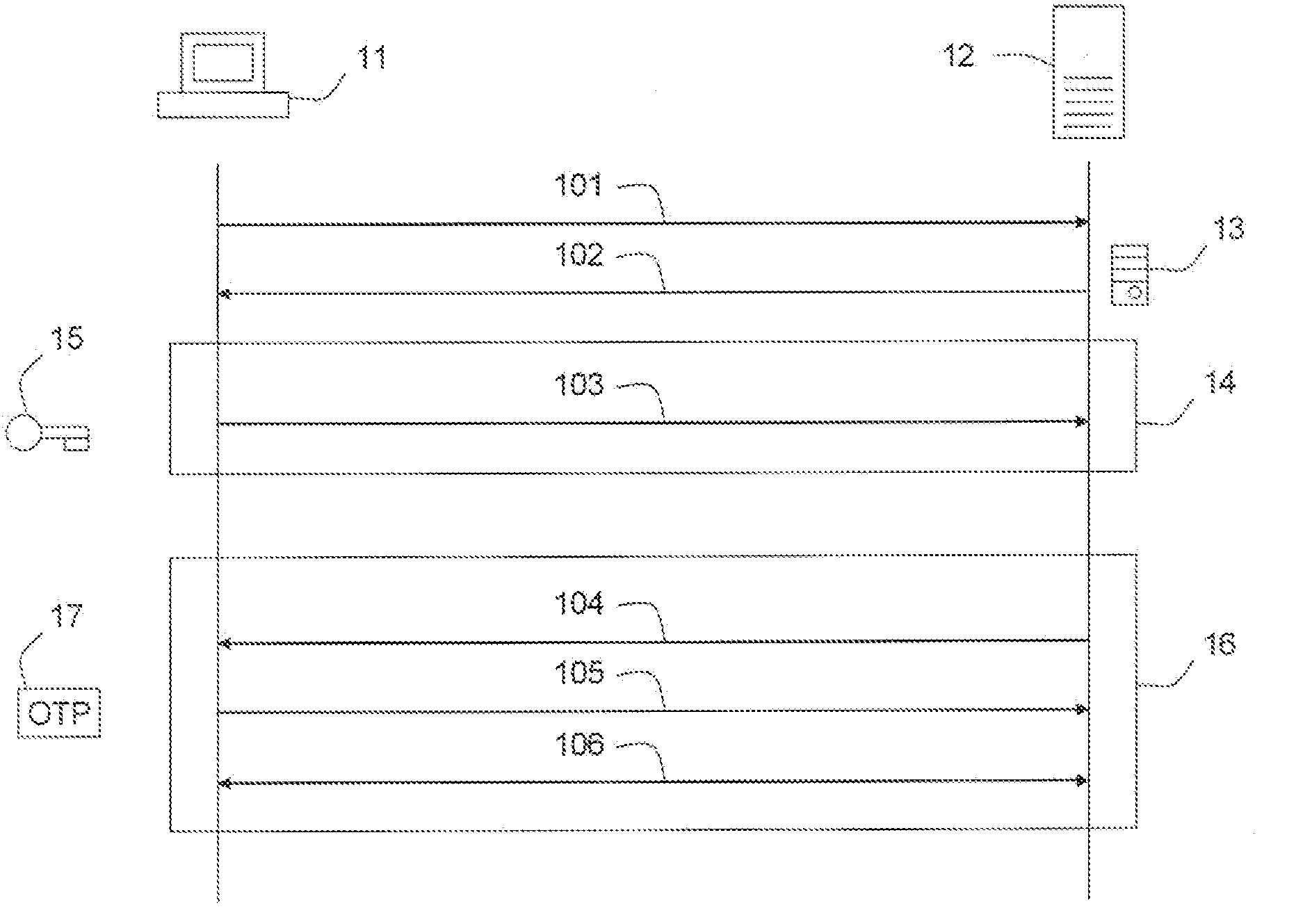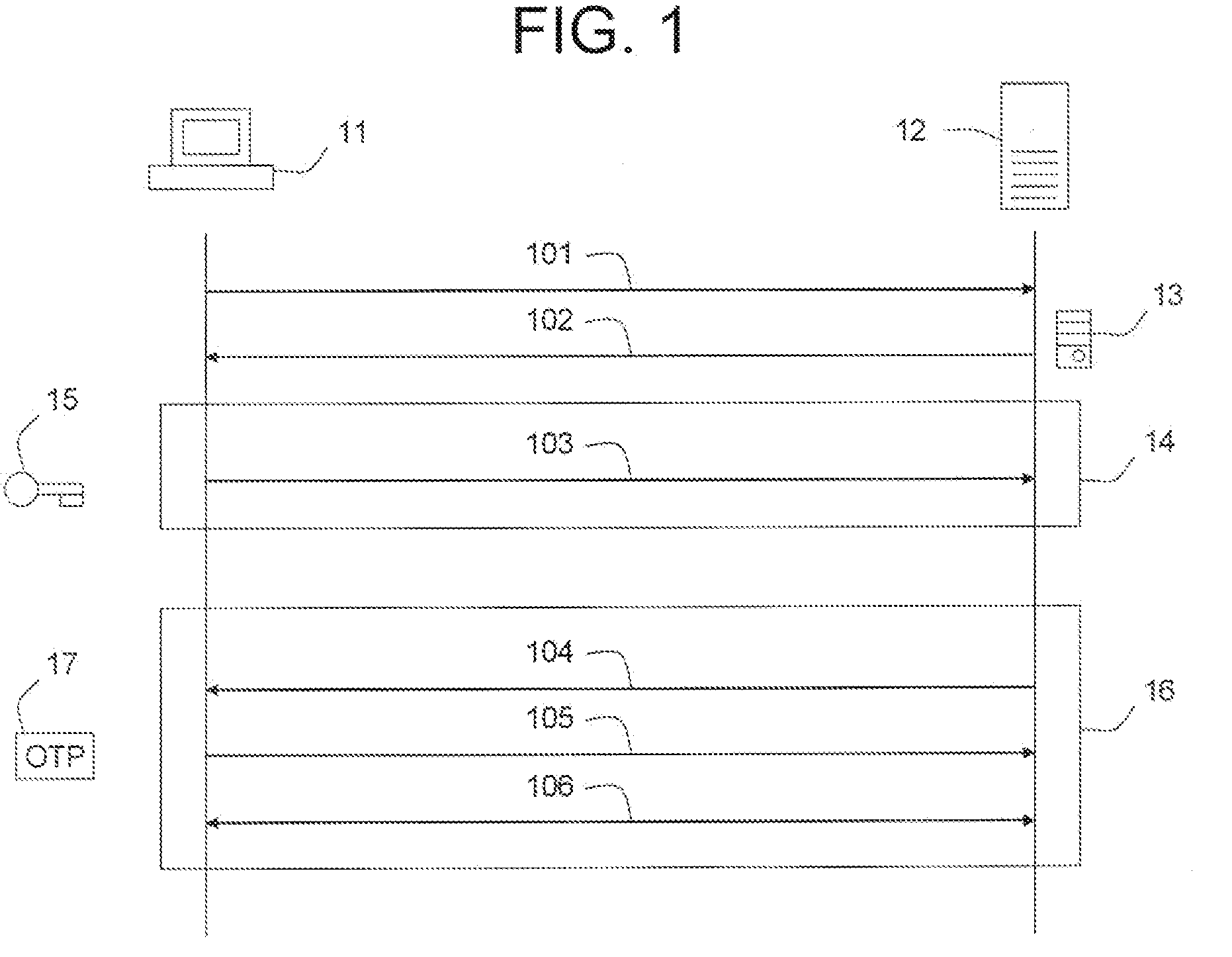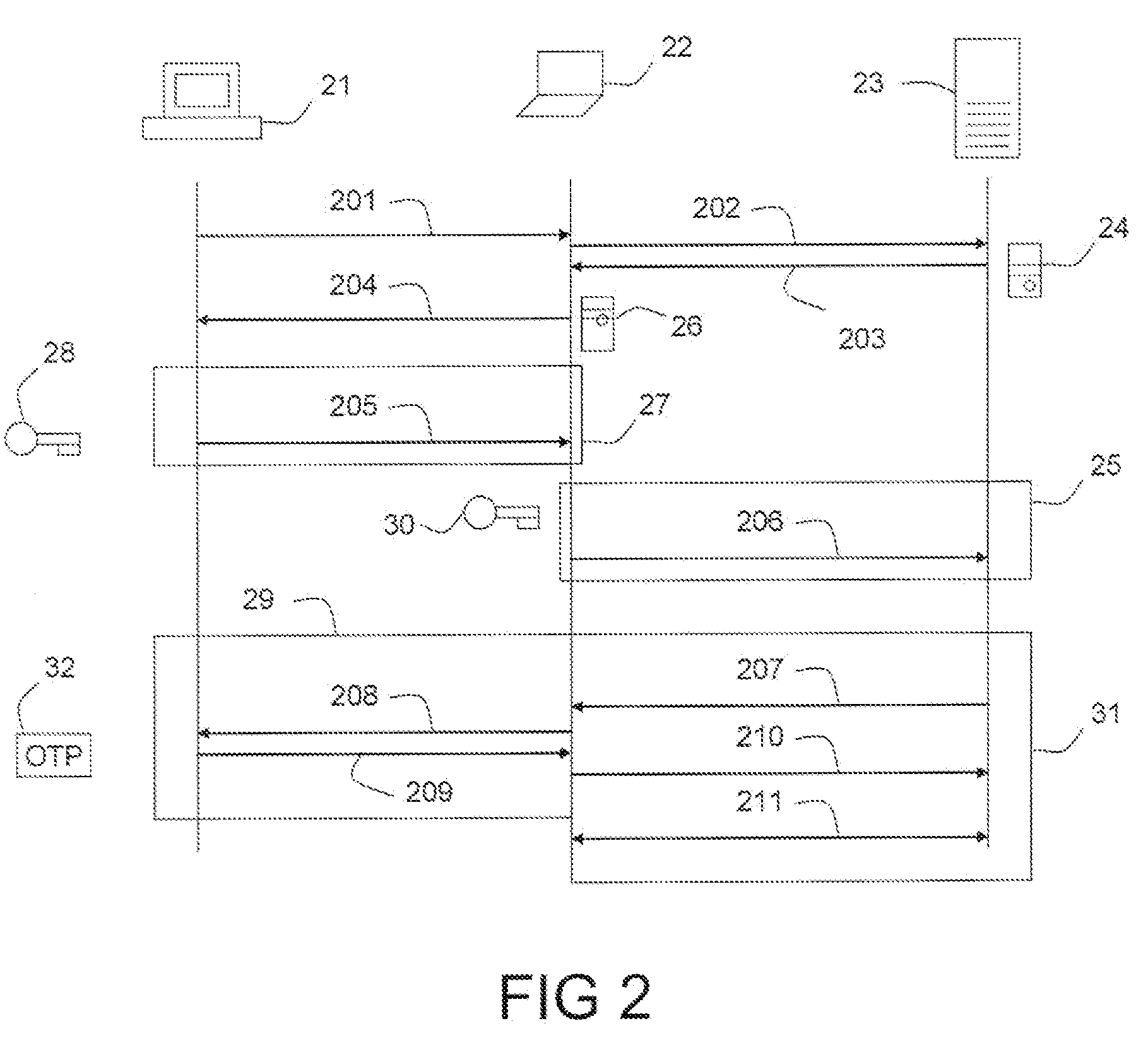Method for server-side detection of man-in-the-middle attacks
a server-side and attack-detecting technology, applied in the field of securing electronic data connections, can solve the problems of not all cas applying adequate verification and registration policies, and the overall security level is rather low, and many computer users cannot adequately assess the concrete risk posed
- Summary
- Abstract
- Description
- Claims
- Application Information
AI Technical Summary
Benefits of technology
Problems solved by technology
Method used
Image
Examples
Embodiment Construction
[0045]FIG. 1 shows the usual procedure for setting up an SSL connection and authenticating the client in band. A client (11) sends an initial message (101) containing a client nonce to a server (12). The server (12) responds with a message (102) containing a server nonce and a server public key with certificate (13). This public key (13) is used to secure the communications represented in box (14) by means of public key encryption. The client (11) sends a message (103) encrypted with the server's public key (13) to the server (12), containing a randomly generated pre-master secret (15) that can be used along with the nonces previously exchanged to derive the session key; this happens independently at the client (11) side and the server (12) side. The session key is used to secure the communications represented in box (16) by means of symmetric encryption. These messages may for example consist of an initial display message (104) from the server (12), which may include a password cha...
PUM
 Login to View More
Login to View More Abstract
Description
Claims
Application Information
 Login to View More
Login to View More - R&D
- Intellectual Property
- Life Sciences
- Materials
- Tech Scout
- Unparalleled Data Quality
- Higher Quality Content
- 60% Fewer Hallucinations
Browse by: Latest US Patents, China's latest patents, Technical Efficacy Thesaurus, Application Domain, Technology Topic, Popular Technical Reports.
© 2025 PatSnap. All rights reserved.Legal|Privacy policy|Modern Slavery Act Transparency Statement|Sitemap|About US| Contact US: help@patsnap.com



